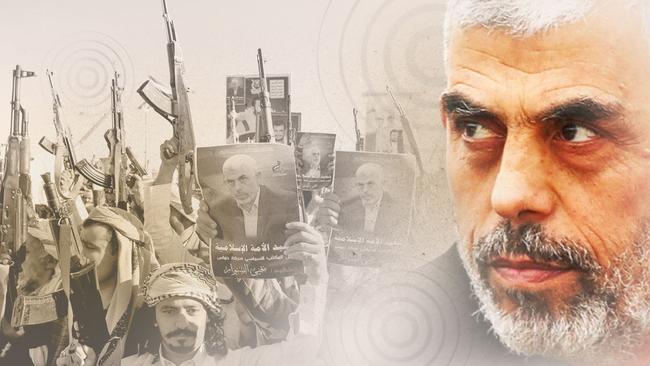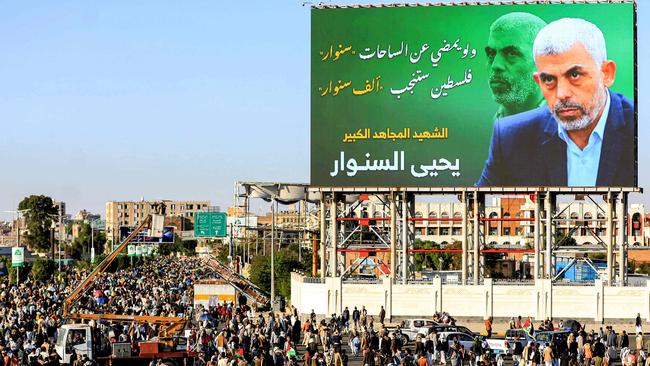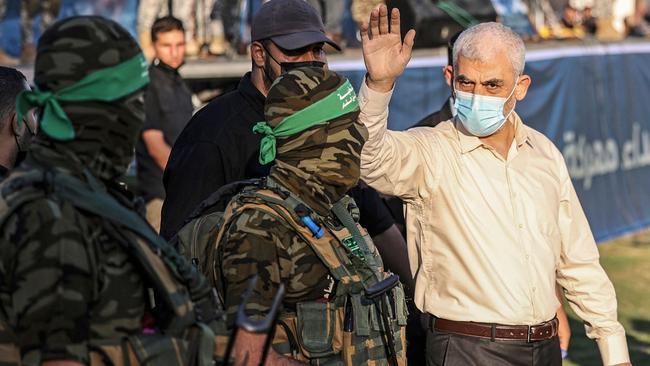What’s next for Hamas? Guerrilla tactics by patient fighters
The death of Yahya Sinwar seems to have ‘inspired’ militants. Now they are planning a war of attrition against Israel, returning to small-unit tactics to tire Jerusalem into a ceasefire deal.

“We gift this operation to our mujahid sheikh Yahya Sinwar,” he said, pressing the button and apparently destroying the tank.
Jabalia had been one of the first parts of Gaza cleared by the Israeli military when it launched its invasion last year after Hamas’s October 7 attack, in which more than 1,100 Israelis were killed and more than 200 taken hostage. Thirteen months later the military has been forced to return as Hamas digs in for a war of attrition it believes will force Israel to withdraw once again from the territory it gave up in 2005.
Hamas’s tactics include roadside bombs, snipers and anti-tank rockets. The militants cannot contend with the might of Israel’s sophisticated military, which has fought insurgencies in Gaza, the West Bank and Lebanon for decades. The aim, a Palestinian analyst said, is to tire Israel into accepting a ceasefire deal in return for the remaining hostages as domestic pressure builds on the government.
“It was thought Israel cannot fight long wars — now that has been disproven,” said Fuad Khuffash. “The only thing [Hamas] can do is hurt Israel when they can. They have two cards left: patience and holding on to their captives. They have no other means of pressure.”

Sinwar’s death last week has given the US hope that ceasefire negotiations could now resume, with the hardline leader and architect of the October 7 attack out of the way. Antony Blinken, the US secretary of state, is visiting Israel and the region again this week to push for a resumption in the negotiations.
Sinwar’s death was celebrated by Israel and lauded by the US, Britain and others. But the manner of it — killed while fighting above ground rather than being assassinated while hiding in a tunnel — may have boosted the resolve of Hamas’s remaining fighters.
Mediators say Hamas is now unlikely to engage in any negotiations that do not lead to a permanent end to the war, and the withdrawal of all Israeli troops. The Israeli government, which is made up of a coalition that includes far-right ministers who say a truce with Hamas is tantamount to surrender, is also unlikely to agree to a complete withdrawal from Gaza any time soon, leaving both sides back to square one in the talks.
If anything, Sinwar’s death, in a chance encounter with Israeli troops after a manhunt that pooled the resources of Israel’s intelligence agencies and the CIA, may have reinforced Hamas’s attrition strategy. Weeks before, Sinwar had said in a letter to Yemen’s Houthis that Hamas “had prepared for a long war of attrition to shatter the enemy’s political will”.

“Hamas, like Hezbollah, are not getting crushed even after their senior commanders were killed,” said Michael Milshtein, a former Israeli military intelligence officer and head of Palestinian studies at Tel Aviv University’s Moshe Dayan Centre for Middle Eastern and African Studies.
“From their point of view it’s damage but not a reason to stop fighting,” he said. “On the contrary, killing Sinwar actually gave inspiration to others. After Israel defeated all 24 Hamas battalions, the organisation returned to the former frames of patterns of guerrilla activity in smaller units. They are very flexible and can adjust very quickly to new and different conditions.”
Sinwar paid no heed to the destruction that the war he started caused in Israel or Gaza, where more than 42,000 people have been killed according to the Hamas-run health ministry. The devastation has turned many Gazans against Hamas but the group is still capable of snuffing out dissent, and it is unlikely that Gazans will listen to Israel’s calls to rise up against the organisation and hand over the approximately 50 hostages who are believed to still be alive.
Despite the elimination of Hamas’s leadership, it can still co-ordinate between its disparate cells throughout Gaza, said Salah al-Din al-Awawdeh, a Hamas member who works as an analyst in Istanbul.
“As long as the announcements and videos of the operations are coming out officially from al-Qassam [the military wing’s official channels on social media], that means there is a central command,” he said. “The media of Qassam is still centralised, which is the biggest indicator that it is in touch with all the Qassam [units].
“Using these tactics doesn’t take up a lot of ammunition. You can make do with a small amount of ammunition and weapons. It’s not about striking Tel Aviv with dozens of rockets. Those are attacks using light arms. That can go on for a long time.”
The Times



After rigging an artillery shell and burying it in one of Jabalia’s rubble-strewn streets, a Hamas militant held the detonator in his hand and pronounced a short dedication to Yahya Sinwar, the group’s leader killed by Israel last week, as an Israeli tank came to a stop.